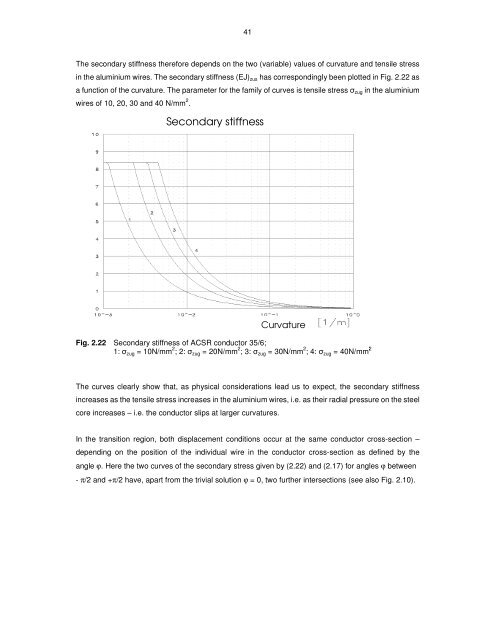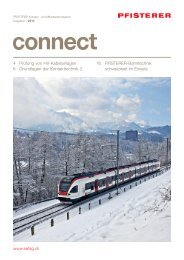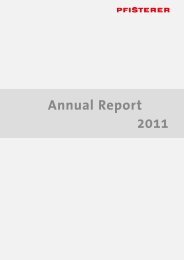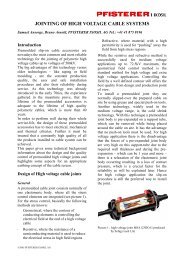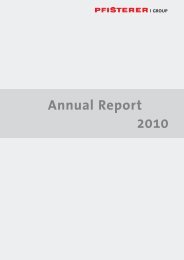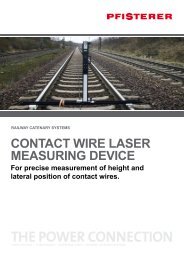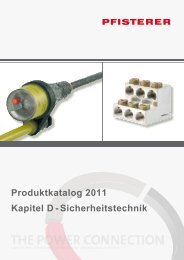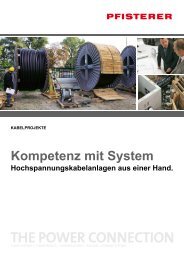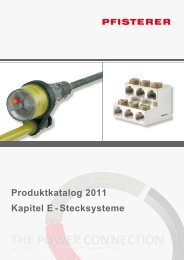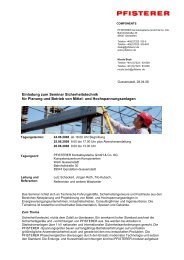Bending of helically twisted cables under variable ... - Pfisterer
Bending of helically twisted cables under variable ... - Pfisterer
Bending of helically twisted cables under variable ... - Pfisterer
You also want an ePaper? Increase the reach of your titles
YUMPU automatically turns print PDFs into web optimized ePapers that Google loves.
The The secondary secondary stiffness therefore depends on the two (<strong>variable</strong>) values <strong>of</strong> curvature and tensile stress<br />
in the aluminium wires. The secondary stiffness (EJ) (EJ)zus has correspondingly been plotted in Fig. 2.22 as<br />
a function <strong>of</strong> the curvature. The parameter for the family <strong>of</strong> curves is tensile stress σzug in the aluminium<br />
wires <strong>of</strong> 10, 20, 30 and 40 N/mm 2 .<br />
Fig. 2.22 Secondary stiffness <strong>of</strong> ACSR conductor 35/6;<br />
1: σzug = 10N/mm 2 ess <strong>of</strong> ACSR conductor 35/6;<br />
; 2: σ zug = 20N/mm 2 ; 3: σzug = 30N/mm 2 ; 4: σzug = 40N/mm 2<br />
The The curves curves clearly clearly show show that, as as physical physical considerations lead lead us us to to expect, expect, the secondary stiffness<br />
increases as the tensile stress increases in the aluminium wires, i.e. as their radial pressure on the steel<br />
core increases – i.e. the conductor slips at larger curvatures.<br />
In In the transition region, both displacement displacement conditions conditions occur occur at at the same same conductor conductor cross cross-section –<br />
depending on the position <strong>of</strong> the<br />
41<br />
Secondary stiffness<br />
Curvature<br />
individual wire in the conductor cross-section section as defined by the<br />
angle ϕ. . Here Here the the two two curves <strong>of</strong> <strong>of</strong> the secondary stress given by (2.22) and and (2.17) for angles ϕ between<br />
- π/2 and +π/2 /2 have, apart from the trivial solution ϕ = 0, two further intersections (see ee also Fig. 2.10).


